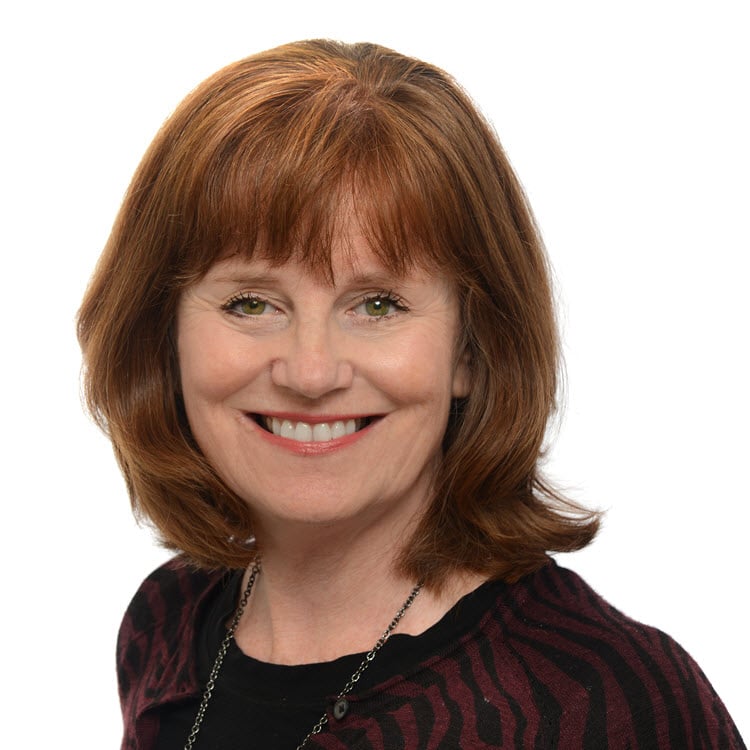Society of NeuroInterventional Surgery (SNIS) President Donald F. Frei, MD talked with SmartTRAK at the SNIS 14th Annual Meeting regarding the future of neurointerventional surgery.

Don Frei, MD, President of the Society of NeuroInterventional Surgery (SNIS), discusses key studies, trends, and technologies affecting the market for mechanical thrombectomy devices in an interview with SmartTRAK at the SNIS 14th Annual Meeting July 24-27, 2017 in Colorado Springs, CO.
A transcript of SmartTRAK’s interview with Don Frei, MD, is below. To listen to the audio interview recorded live at SNIS 2017, click here .
SmartTRAK: Let's talk a little bit about some of the need-to-know research results here at SNIS 2017. What do you think are the big studies we should be aware of?
Donald Frei, MD: The DAWN Trial is one of the studies that's expanding the indication to treat more patients by selecting patients much further out than the typical zero-to- six-hour window. But we're also looking at patients that have moderate to large size core infarcts, so really what we need to do is expand the indication so we can treat and help more patients. That's what we're looking at, as next steps.
When you say expand the indications, are you talking about more distal strokes, rather than the large vessel occlusions, or-
DF: That's also one of them. More distal branch occlusions would be an expanding indication. If you are unable to talk, you have aphasia, and you have a distal branch occlusion, wouldn't you want that fixed? Because that's a major disability, but it's not a large proximal artery occlusion. So that's one thing, looking at patients with lower NIH stroke scales and presentation, looking at patients that have moderate to large core infarcts already. Not the narrow inclusion exclusion criteria that we have used for the first round of successful randomized trials. We're now looking at studies to be able to treat and help more patients.
Okay, so let's talk a little bit about the DAWN results. It looks like there's benefit to using mechanical thrombectomy from 6 to 24 hours in wake-up strokes as well, correct? Is this affecting clinical practice now? Do they have to wait until the societies come out with guidelines? Where is this at, and how is this affecting the market?
DF: Oh no. Some of us have known this for a long time and published it, looking at imaging, patient selection, and never cared about the time of last seen normal. But this is a very important study because it tells everyone, including the biggest naysayer, academic stroke neurologists, and emergency medicine physicians, this tells everyone that thrombectomy is extremely effective even after 24 hours. So we will absolutely see this affect the number of patients we can and will treat, immediately.
What else is needed, as far as the societies to develop guidelines that will incorporate such an expanded treatment window?
DF: Our society will be coming up with updated guidelines this year, for sure. I will tell you as a member of the Colorado Stroke Advisory Board, which is governor-appointed, we've already expanded that indication, and recommended that to all the EMS medical directors and emergency medicine, EMS paramedics, to bring patients in, call stroke alerts, even up to 24 hours.
Do you have any idea how many more patients will be treated with these new guidelines, versus the other less than six-hour window?
DF: I think we could see our volume double, triple, quadruple. And part of that volume increase is just building up the systems of care and getting the right patient to the right hospital first, and all the other systems of care things that we've been working on through our societies. The Get Ahead of Stroke initiative, working with local emergency medical services and state health departments et cetera. Our volume of thrombectomy has been significantly increasing for the last several years anyway, but expanding the indication to 6 to 24 hours will absolutely, I think have a huge uptick in the number of patients that are treated.
“I think we could see our volume double, triple, quadruple. And part of that volume increase is just building up the systems of care and getting the right patient to the right hospital first...”—Don Frei, MD
As far as trends in imaging, how is that affecting who receives treatment, as far as mechanical thrombectomy? I was in a lecture and they were talking about large infarcts, and that some patients actually can come back, and they talked a lot about the different selection criteria, and diffusion-weighted imaging versus CT-weighted imaging, and the ASPECT score, and they said there's a lot of variability between readers, as to what the imaging looks like. So how is that evolving?
DF: I don't think we have the perfect answer right now. In our experience, we use the ASPECT score, and it's very fast and effective, and we're all very experienced neuroradiologists, so we do the imaging right then and there. In some circumstances they're using this rapid software, where it auto-quantitates that information. Diffusion MR is used by some centers. I believe it's too slow and it slows down the process. CT perfusion is being used by some centers, not really been validated. So I think there are several choices. The key is to learn and do clinical research, and try and figure out the best choice, but it has to be very fast.
I think there's still more data that we need to sort out, to look at things like the ASPECT score and diffusion perfusion mismatches.
In terms of procedure growth, personally, with all the clinical trial data that came out two years ago, what are you seeing in your clinical practice? How fast do you think these procedures are growing? We have our own estimates, but just curious from a clinical perspective how that's impacted you, especially where there are some limitations, right? There's only so many neurointerventionalists around, and there's the systems of care….
DF: There's plenty.
How many are there in the United States?
DF: Probably a thousand.
And that's enough? Are they distributed in a reasonable way that people have access to care?
DF: Yes. In our center, in Denver, where we've been extremely busy for many years and very aggressive, we still saw a double in the number of cases between 2014 and '16. And that was neared nationally as well. The thrombectomy volume doubled from 2014 to 2016. This year to date, we're probably going to go up at least 50% in our institution.
What do you think is driving that, really? Is it the technology? Is it access to care, improved access?
DF: I think we know the technology works. The technology was proven to be effective in 2014. What's happening now is the setting up more streamlined and effective systems of care. That's what I was talking about before. If you get a stroke initiative, it's partnering with the state health departments and coming up with EMS triage, identifying large vessel occlusion in the field, and transport algorithms getting them directly to a thrombectomy-capable, or level one stroke center.
I know they have CT imaging in certain ambulances. Are there other technologies that are emerging, to be able to diagnose in the field?
DF: I think that CT ambulances are cool. I don't think you can have them everywhere. I guarantee you there's probably 25 start-up companies right now looking for the stroke equivalent of EKG for STEMI.
“I guarantee you there's probably 25 start-up companies right now looking for the stroke equivalent of EKG for STEMI.”—Don Frei, MD
Transcranial imaging, or something like that? Like a biomarker, you mean?
DF: Through the scalp, blood volume evaluation, something simple. DF: Not necessarily a biomarker. It has to be something that can be done in the ambulance, by a paramedic. I think in the next year or two we're going to see some really exciting advances in that type of technology.
As far as limiting growth, do you think the major limiter then is not the staffing issues, as much as it is the current systems of care?
DF: I don't think it's staffing. It's just, it is systems of care.
I know you guys are working toward that. How far away is the improvement that we'll see to make a big difference in the market?
DF: Already, 17 states have legislation on this type of thing. For instance, Rhode Island. If you're within 45 minutes of a Level one stroke center, EMS takes them directly there if their LA Motor Scale is four or five. LA County's doing the same thing. We've already just recently got a very successful, appropriate legislation passed in Arizona. We had a joint resolution sponsored by every senator and representative in the state of Colorado, basically mandating the Department of Health to set the same thing up. We're almost to completion in Tennessee. And these are the blueprint sites to figure out how to do it, so the rest of the country can do it. Massachusetts is far along. So I think we're moving very rapidly and we need to, because if we go slow, patients are not being helped.
With that kind of advancement, are you seeing any results yet, as far as the time to recanalization in those states? What kind of times are we looking at?
DF:They're plummeting. The time from symptom onset to door to the Level one stroke center to re-canalization is dropping. Because if an ambulance takes them to the nearest hospital and then they have to go to the next hospital, it's like a two-hour delay. They call it door-in, door-out time. If you get them directly to the right hospital like you do for STEMI and Level one trauma, you can really get the artery open very quickly which means better outcomes.
I know there's been some debate about cardiologists, interventional cardiologists doing these procedures. What is the SNIS position on that?
DF: Do you want an untrained physician operating on you? Would you want a general surgeon taking out your brain tumor? Or a cardiothoracic surgeon operating on your colon? If you want to go through the well-established neurointerventional surgery training program, then you should do that.
I could put a coronary stent in all day long. It's a lot easier to access the coronary arteries, than it is to access the intracranial arteries. And coronary arteries are less fragile. I could do coronary intervention with ease. But I don't. Because I don't have-
Well are they being done right now that way, with interventional cardiologists performing these?
DF: Not that I know of. It would be a bad idea. It would be a travesty.
Let's talk a little bit about technology. I know from our own projections that aspiration thrombectomy, the ADAPT technique, is really growing very fast. And then there's the Solumbra and stent retrievers. In your perspective, what do you see as one of the fastest growing?
DF: There's a study that was just completed called the COMPASS trial, in the U.S., we one of the centers, randomizing to stent retriever first, versus aspiration first. That study will probably be published later this year. There's a study in France called the ASTER trial that showed, the same concept—that they were both fairly equivalent. So they're both very good tools. We happen to use aspiration at our center. We think it's faster, safer, less steps so the time process is quicker. But that's my personal bias.
You need studies to show. I think what is going to happen is that the technology will continue to get better than what we have today. What I use in two years will probably not be the same thing I'm using right now.
“The technology will continue to get better than what we have today. What I use in two years will probably not be the same thing I'm using right now.”—Don Frei, MD
What are some of the big technology needs, that you see, as far as what manufacturers can do to improve their devices?
DF: I think what we've seen over the last several years, is that safety has gone up, so that's great. It's safer. What we need to do, is be able to completely re-canalize the vascular territory, to 100% re-canalization, we call it TICI 3 rather than 2b. So what we need to do is move the re-canalization rate over to TICI 3 for everybody. That means complete re-canalization without distal branch occlusions, and I think that's where we need to get better. The more complete the re-canalization, the better the patient does. The faster the re-canalization, the better the patient does.
Is there any thing ... If they only fix this, it would really help. Do you have any ideas as far as, I don't know, technology development?
DF: I think there are a lot of things that we signed non-disclosure agreements about that we can't talk about that are happening. But there's a lot of research and the research and engineering departments of all of these companies are working very hard to make these devices better, safer, for better re-canalization outcomes. It's a big patient population, and it's so underserved. We are not treating enough patients.
What's next for neurointerventional surgery? What do you think are the next big things we'll be seeing out of this field?
DF: I think our next frontier, and this is my personal opinion, is neuro oncology. Look what the peripheral interventional world has done for liver tumors. Super-selective, intra-arterial chemoembolization of brain tumors. Virus vector targeted chemotherapy delivered selectively to the brain tumor through the artery. So intra-arterial.
“I think our next frontier, and this is my personal opinion, is neuro oncology.”—Don Frei, MD
Theoretically use some of these same technologies to deliver therapy. That's exciting. That opens up a whole new market then.
DF: Yes.
What about your priorities as the society president? What are the priorities for SNIS going forward in the next few years?
DF: I think one of our biggest priorities is what we're been doing for the last few years and need to accelerate, is the Get Ahead of Stroke Initiative. Get the patients, get all patients treated quickly and effectively and safely by the best doctor at the right hospital. It's just getting these systems of care to catch up to our technology. That's important, and we're partnering with local regional state and national legislators and EMS directors et cetera. That's really, very important.
I think the clinical research on expanding the indications for thrombectomy is really important. We're also, if you notice there's a lot of international faculty at this meeting. We're working very hard to be collaborative and work closely with neurointerventional societies worldwide, on joint registry efforts, joint research efforts, joint efforts on establishing guidelines and things like that. We'll see later today that we have physicians from Central and South America, Europe and Asia, as well as North America. They're all going to be talking about stroke in that part of the world, so it will bring the world together.
Thank you so much. Well this has been a great meeting so far. Thanks for your time.
DF: No, thank you.





